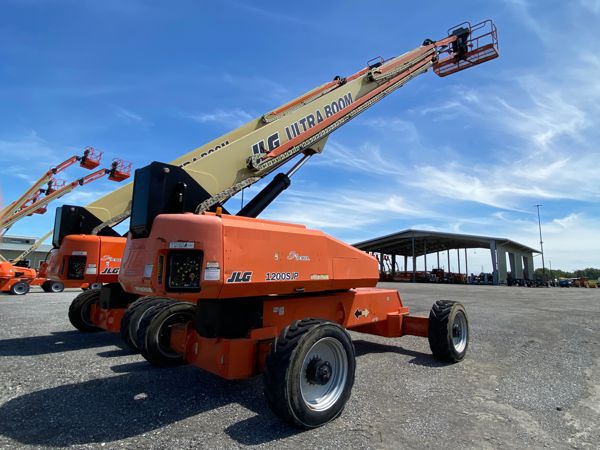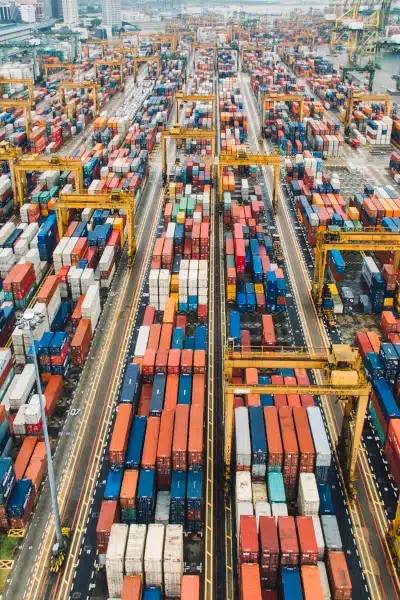Aerial Lift Safety Toolbox Talk - Safety Checklist & Resources
Sept. 18, 2021
Learn how to operate and maneuver aerial lifts safely around your job site.

Aerial lifts are popular equipment to access elevated areas on a platform. Aerial lifts encompass a broad category of equipment, including boom lifts, articulating boom lifts, scissor lifts, telescopic boom lifts, and more.
Over the past few decades, more contractors and job sites have gravitated to using aerial lifts instead of still scaffolding and ladders. Aerial lifts provide more maneuverability and access to hard-to-reach areas.
Today, the largest aerial lift manufacturers are JLG and Terex's Genie brands.
Similar to most types of machines, there are specific hazards associated with operating an aerial lift. Common injuries and accidents include:
- Falling when the platform is raised
- Items that fall from the raised platform and injure someone on the ground
- Tip-overs
- Ejection from the lift platform
- Collapse / structural failures
- Electrocution from nearby power lines
- Entanglement
OSHA has published specific guidance for the use of aerial lifts on job sites.
Pre-Lift Inspection
It is very important to inspect your aerial lift prior to each work shift. You should review the checklist below and verify the machine is in working order. Also, it is very important to follow manufacturer safety and maintenance guidelines.
-
Vehicle components:
- Fluid levels (oil, hydraulic, fuel and coolant)
- Fluid leaks
- Wheels and tires
- Battery and charger
- Lower-level controls
- Horn, gauges, lights and backup alarms
- Steering and brakes
-
Lift components:
- Operating and emergency controls
- Personal protective devices (PPE)
- Hydraulic, air, pneumatic, fuel and electrical systems
- Fiberglass and other insulating components
- Missing or unreadable placards, warnings, or operational, instructional and control markings
- Mechanical fasteners and locking pins
- Cable and wiring harnesses
- Outriggers, stabilizers and other structures
- Loose or missing parts
- Guardrail systems
-
Work zone Inspections
- Drop-offs, holes, or unstable surfaces such as loose dirt
- Inadequate ceiling heights
- Slopes, ditches, or bumps
- Debris and floor obstructions
- Overhead electric power lines and communication cables
- High wind and other severe weather conditions, such as ice
- The presence of others in close proximity to the work area
Safety Practices When Operating An Aerial Lift
Fall Protection
- Ensure that access gates and openings are closed.
- Stand on the floor of the platform with both feet.
- Do not climb on or lean over guardrails.
- Do not use planks, ladders, or other devices as a working position.
- Use a body harness or a restraining belt with a lanyard attached to the boom or bucket.
- Do not belt-off to adjacent structures or poles while in the bucket. When the platform moves, it could eject you.
Operation/Traveling/Loading
- Do not exceed the load-capacity limits. Factor in the combined weight of people, tools and materials into account.
- Do not use the aerial lift as a crane. It was not designed to function as a crane - the lift wear down faster and it can hurt people.
- Do not carry objects larger than the platform.
- Do not drive with the lift platform raised (unless the manufacturer’s instructions allow this).
- Do not operate lower-level controls unless permission is obtained from the worker(s) in the lift (except in emergencies)
- Do not exceed vertical or horizontal reach limits.
- Do not operate an aerial lift in high winds above those recommended by the manufacturer.
- Do not override hydraulic, mechanical, or electrical safety devices.
Overhead Protection
- Be aware of overhead clearance and overhead objects, including ceilings.
- Do not position aerial lifts between overhead hazards if possible.
- Treat all overhead power lines and communication cables as energized, and stay at least 10 feet away.
- Ensure that the power utility or power line workers de-energize power lines in the vicinity of the work.
Aerial Lift Stability
- Set outriggers on pads or on a level, solid surface.
- Set brakes when outriggers are used.
- Use wheel chocks on sloped surfaces when it is safe to do so.
- Set up work zone warnings, such as cones and signs, when necessary to warn others.
Group Discussion Topics
- Is the aerial lift in good condition (for example, tires, hydraulic lines, signage, etc.)? Perform a visual inspection daily.
- Are there any potential risks at elevated levels nearby (for instance, power lines, gas pipes, etc)?
- How safe is the workplace floor surface to operate an aerial lift?
- How many persons will be on the platform? Does the combined weight of the persons and their gear exceed weight limits?
- What could cause the scissor lift to tip over?
Find Similar Articles By Topic
#construction #material handling #toolbox talks #aerial lifts #Terex #JLG



